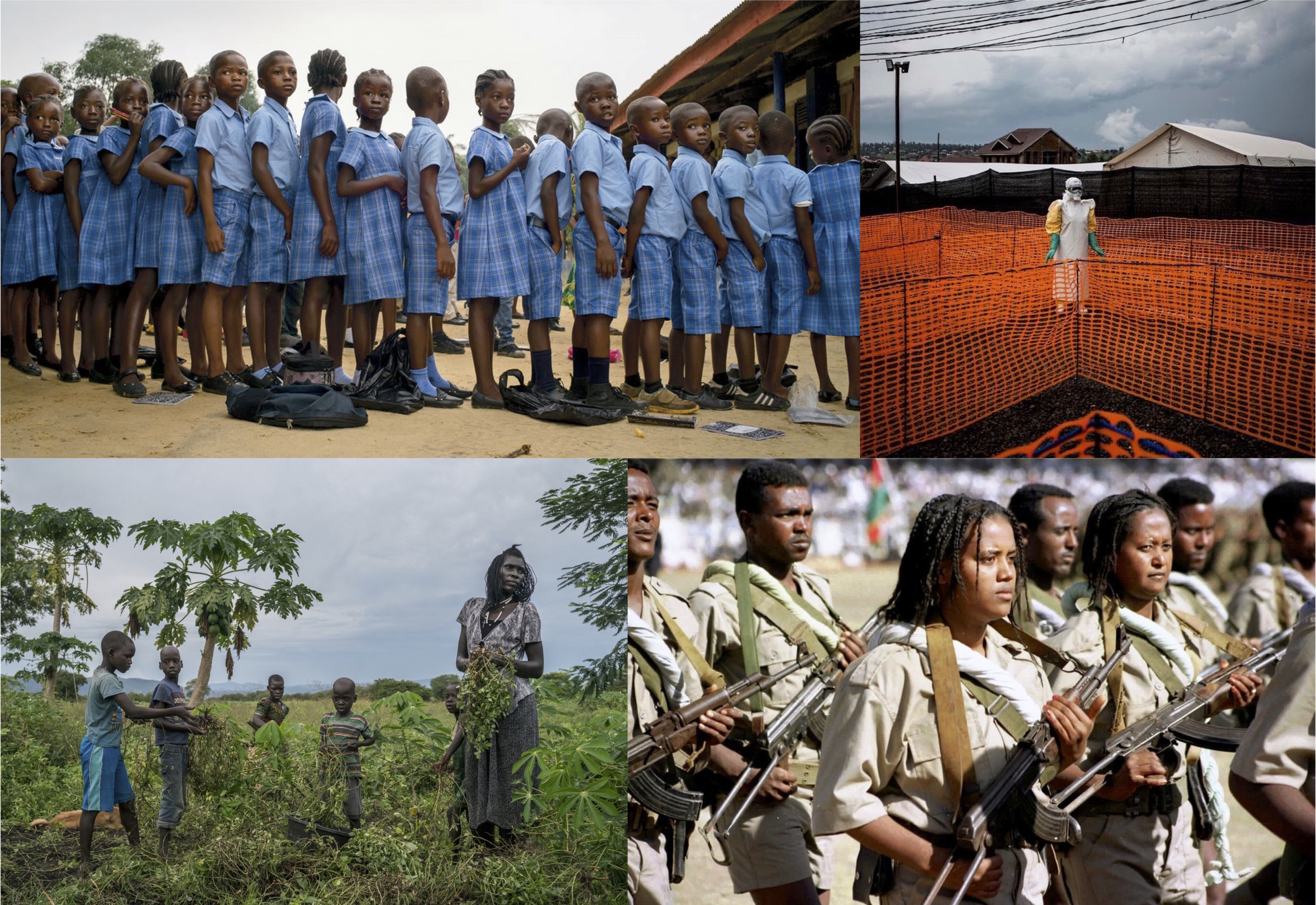The News about Africa
Evaluating the tone of coverage in The New York Times

It is no secret that bad news sells. Stories about violence, disaster, and scandal are more likely to capture readers’ attention than tales of daily life. Even so, journalists and scholars have argued that Western media coverage of Africa is especially negative. In a 2013 Guardian article, for example, Remi Adekoya accuses the media of “propagating negative stereotypes of Africa as a nest of poverty and problems,” paralleling scholarly claims of disproportionate coverage of danger, darkness, violence, poverty, hopelessness, backwardness, savagery, and primitiveness.
Martin Scott challenges this dominant narrative, arguing that substantial gaps exist within analyses of Western media representations of Africa. He observes that scholars focus on negative topics – war-torn countries and disease outbreaks, for example – and make assumptions that negativity pervades all coverage. Testing Scott’s skepticism of scholarly presumptions, a 2018 analysis of 282 British and French newspaper articles found that “the claims that coverage systematically refers to ‘tribalism’ and ‘darkness’…[are] not empirically supported.”
We evaluate these competing narratives about media portrayals of Africa by examining newspaper coverage over a 10-year period. We assembled all 24,105 articles published in The New York Times that mentioned “Africa” or “African” between January 1st, 2008 and December 31, 2017.
The Media Portrayals of Minorities Project uses a method involving dictionaries of positive, neutral, and negative words (such as “beautiful,” “fourth,” or “attack”) to gauge the tone of individual articles. Essentially, negative articles contain more negative than positive words and vice versa. We benchmark each article against a pool of over 48,000 randomly selected articles from a cross-section of the US print media, for which we set a mean of 0 and a standard deviation of 1.
Our analysis reveals that articles mentioning Africa are not overwhelmingly negative. In fact, they are closer to neutral. Overall, the average article among our 24,105 stories referencing Africa has a tone of -0.11, which makes it more negative than only 57% of articles found in our representative sample of the US print media. In other words, it is only marginally more negative than the average randomly selected newspaper article.
While this degree of negativity was lower than we anticipated based on much of the scholarly literature, we wondered about the subject matter of our articles. To explore their thematic content, we tagged each article for the presence (or absence) of specific “features,” including: “disease,” “conflict,” “death,” “helplessness,” “failure,” “corruption,” “poverty,” and “backwardness.” Each of these features represents words and subjects that scholars claim are overemphasized in Western media’s coverage of Africa. We wanted to see exactly how often they appeared in a high-circulating American newspaper.
Our results showed that none of the topics routinely emphasized by the literature appeared in more than 50% of articles. Of the variables, “disease” was discussed the most frequently, in 41% of articles. “Conflict” was the second most common topic, appearing in 39% of articles. “Helpless,” a feature that includes words like “helpless,” “dependent,” “desperate,” “defenseless” and “vulnerable,” appeared in 27% of articles. Interestingly, “backwardness,” which includes the majority of the terms most heavily critiqued by scholars and journalists such as “backward,” “uncivilized,” “barbaric,” “barbarian,” “savage,” “outdated,” “primitive,” and “undeveloped,” appeared in only 5% of articles over our 10-year period of analysis.
It is important to look beyond the relative presence of different themes in articles about Africa to determine which subjects are the most negative. Our statistical tests show that articles referencing violence, war, terrorism, corruption, and state failure are the most negative in tone. Interestingly, articles mentioning disease and poverty are less negative than we anticipated – in fact, they are neutral when controlling for the security-related variables mentioned above.
Does this mean that articles about Africa are not negative after all? Not necessarily. Notably, 73% of our articles referenced one or more topics related to disease, conflict, helplessness, backwardness, and state failure. Moreover, drilling down into one particular type of coverage, we found that over 70% of articles mentioning disease also contained words connected to “intervention” and “aid,” while 35% included words related to helplessness. This suggests that although these articles may not be as dramatically or overtly negative as certain scholars claim, they might still perpetuate narratives of African impotency and dependence.
In sum, the words critiqued by scholars as the most egregious descriptors of Africa (“barbaric,” “savage,” etc.) do not materialize very often in newspaper coverage. However, topics such as disease and conflict are unquestionably still prominent, and may serve a similar purpose of portraying Africa as a homogenous, crisis-ridden continent. Thus, Scott’s call for a more nuanced and holistic analysis of coverage of Africa is both valid and essential for understanding how Western media portray the continent.
-Emily Stabler, Julien Souffrant & Rand Jibril
Methodological note: We analyzed 24,105 articles drawn The New York Times. Our analysis includes every article published in those papers between January 1st, 2008 and December 31, 2017 with the root words “Africa” or “African” in the headline or text of the article. For additional information about our methods, click here.